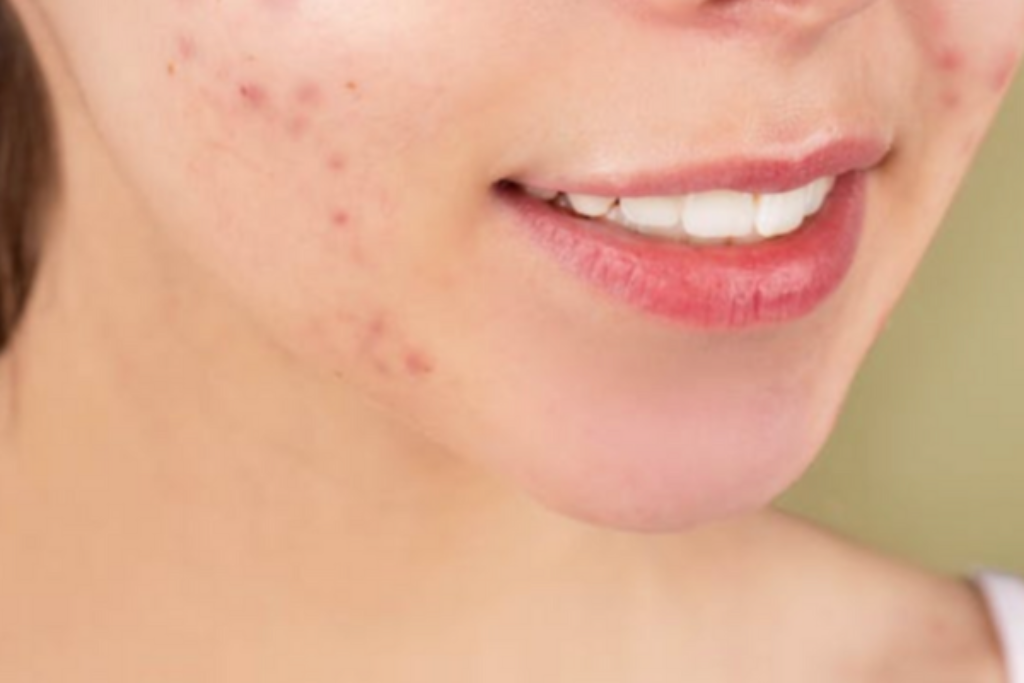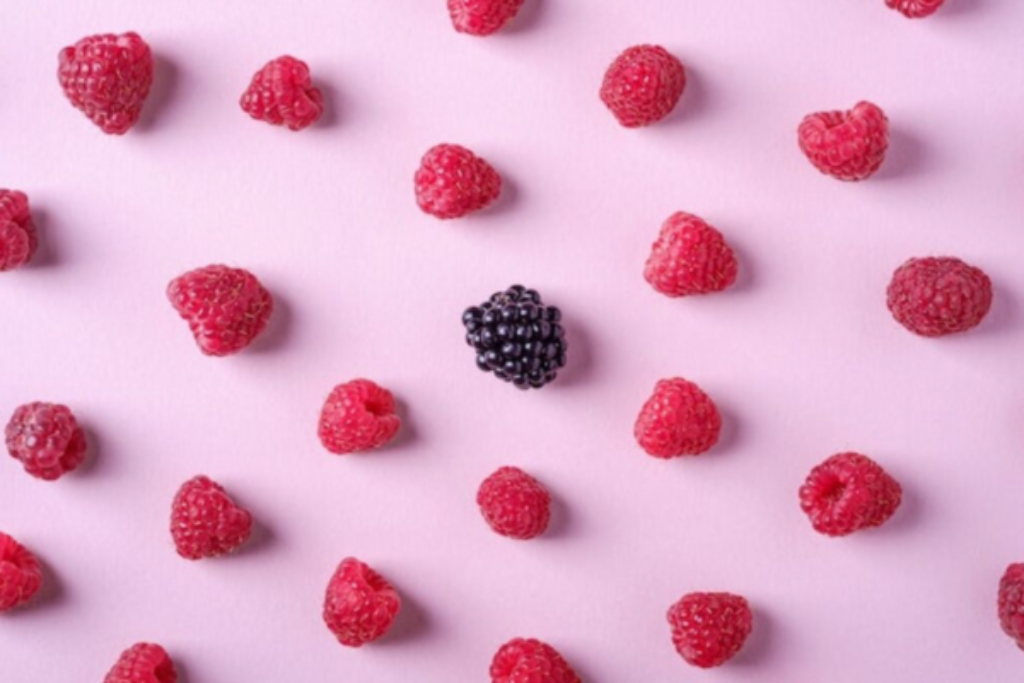Do you Image a scenario? when you wake up and stroll to the mirror, you see that there it is a small, unassuming white spot on your face. At first glance, you may feel nothing. However, when you inspect your face closer, you may feel that the small white spot reveals a troublesome truth. This is no ordinary visitor. It is a whitehead, a type of acne that can turn from a minor inconvenience into a persistent nightmare if not addressed correctly.

What are whiteheads?
The whitehead is a type of acne known as closed comedones, result from pores clogged with sebum, dead skin cells, and bacteria. Unlike their more inflammatory counterparts, whiteheads remain under the skin’s surface, creating a smooth yet bumpy texture that can be challenging to eliminate. Whiteheads form when pores become clogged with sebum, dead skin cells, and bacteria. This concoction creates a plug, capped with a tiny white bump that sits just below the skin’s surface, giving whiteheads their characteristic appearance.
7-day healing way
In the first day when whitehead forms, patience is the the most crucial element. Overnight solutions are rare. Since the whiteheads still remain under the skin’s surface, it takes time to move toward the skin surface. Over-the-counter treatments containing salicylic acid or benzoyl peroxide can be a good starting point, helping to unclog pores and reduce inflammation. You can apply AHA or BHA facial cleansing mask on the clogged skin for some days. Alternatively, you can apply some facial creams or serums which contain some AHAs or BHAs.
Chemical exfoliants like AHAs (alpha hydroxy acids, such as glycolic acid) and BHAs (beta hydroxy acids, such as salicylic acid) are particularly effective. BHAs are oil-soluble, allowing them to penetrate deeper into the pores to dislodge the buildup that leads to whiteheads. Incorporating a gentle exfoliant into your skincare routine a few times a week can make a significant difference.
Hydration is key, even for acne-prone skin. Lightweight moisturisers containing hyaluronic acid are excellent for providing moisture without adding oil. Products containing retinoids, derivatives of Vitamin A, are another options to fight against whiteheads. It can help increase cell turnover.
Lifestyle is a matter
Beyond skincare, lifestyle factors also play a significant role in managing whiteheads. In your meals, it is highly suggested not to have any deep-fried food or any food that may increase overall inflammation in your body. Besides, fruit and vegetables are highly recommended so as to supports skin health from the inside out. Exercise and sufficient sleep can also reduce overall inflammation in the body, benefiting the skin.
Patience and persistence
Combating whiteheads is a journey that requires patience and persistence. It is important to remember that overnight results are rare, and consistent. One-week care is key to achieving and maintaining clear skin by using right products. By understanding your skin’s needs and addressing them with a targeted skincare routine, you can significantly reduce the presence of whiteheads and enjoy a smoother, clearer complexion.

How To Win The Battle Against The Facial Blemishes
Who don’t want to have a flawless skin on your face? However, sometimes, it is not so simple. Facial blemishes stand as one of the most formidable opponents. These unwelcome intruders, ranging from acne and dark spots to uneven skin tone, can detract from one’s natural beauty and dent confidence. But fear not, for the battle against blemishes is one that can be won with the right strategy.
What is blemish?
Back to basic, what is blemish? Blemish is any type of mark, dark spot or flaw that appears on the skin. It can develop into black or whiteheads. It can also come with redness or itchiness. Blemish prone skin is usually oily. The blemish may be due to an excess of oil or sebum. The excess of sebum can also lead to clogged pores, inflammation, and the above-mentioned different types of blemishes. Hence, balancing sebum and water on the skin is an importantly basic step for blemish-prone skin.
Understand your enemy
Blemishes occur due to a myriad of factors including hormonal imbalances, stress, pollution, improper skincare routines, and diet. Each cause might require a different approach, making it essential to pinpoint the root cause of your skin woes.
Fortify your defence with a basic skincare routine
The cleansing step is basic but very important. We should carefully pick the cleansing product with care. Hydration is important to balance the level between hydration and sebum. A gentle cleanser is recommended to remove impurities without stripping your skin of its natural oils.
Regular exfoliation can help unclog pores and remove dead skin cells, but over-exfoliation can lead to irritation and worsen blemishes. Limit this practice to once a week, choosing chemical exfoliants like AHAs or BHAs for their ability to penetrate deeply yet gently.
As the above-mentioned, hydration is key, even for oily and acne-prone skin types. Lightweight moisturisers can hydrate the skin without clogging pores. Furthermore, daily sunscreen application prevents hyperpigmentation and protects against the exacerbating effects of UV exposure on blemishes.
Targeted treatments
Spot treatments containing ingredients like benzoyl peroxide, salicylic acid, or tea tree oil can be effective. These ingredients help to reduce inflammation and kill acne-causing bacteria. Incorporate serums rich in vitamin C or niacinamide to tackle dark spots and promote an even skin tone. Products containing retinol can also accelerate cell turnover, fading blemishes over time. Besides, hydro-facial treatment can improve the appearance of acne, acne scarring and regulate oil levels caused by excess sebum.
Apart from skincare attention, diet habit cannot be overlooked. What you consume reflects on your skin. A balanced diet rich in antioxidants, vitamins, and minerals can fortify your skin from the inside out. Drinking ample water also helps to flush out toxins that could otherwise manifest as blemishes.
Stress is possibly one of the cause for the blemishes. Inflammation inside your body is the power triggering blemish-prone skin. Good sleeping not only aids in stress reduction but also allows your skin to repair and regenerate overnight.
Of course, if the skin situation is very worsening, it might be time to consult a dermatologist or doctor.
Fighting facial blemishes is not a one-off battle but a continuous effort. Consistency in your skincare routine, along with healthy lifestyle choices, can make a significant difference over time.


